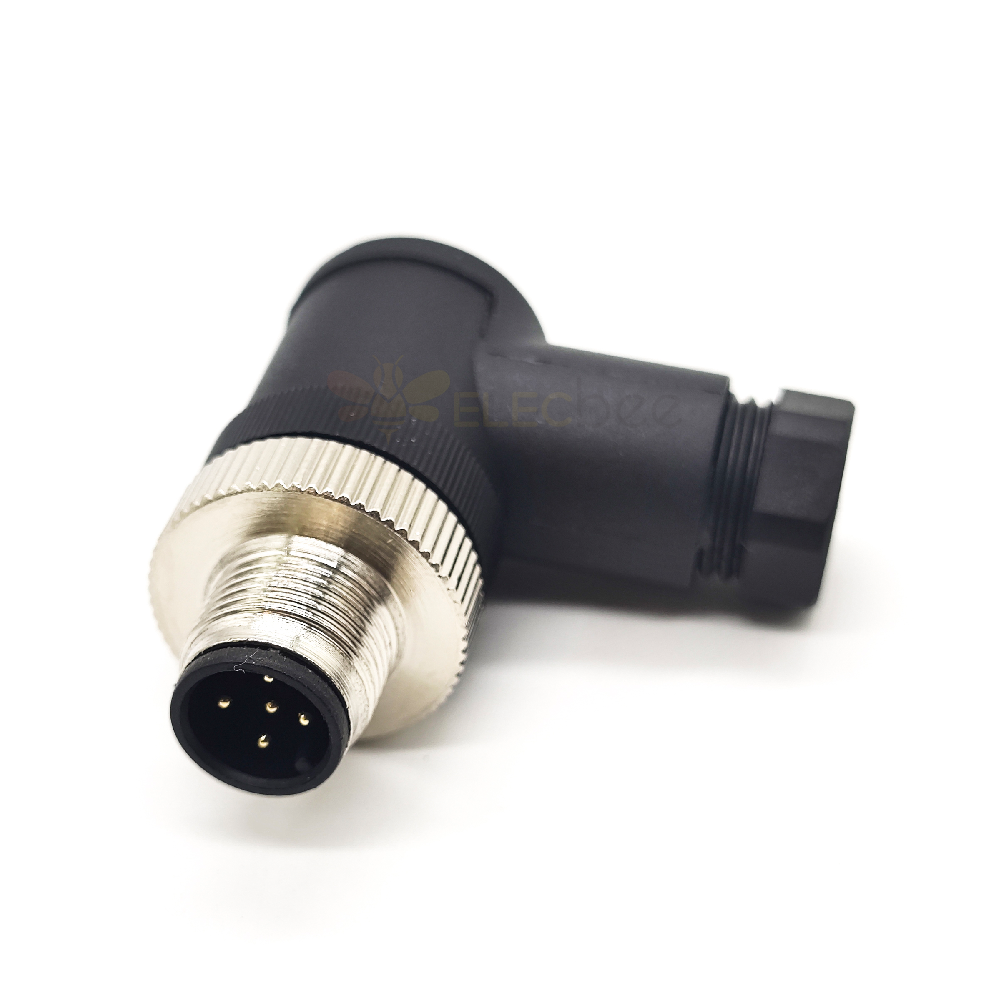M12 커넥터는 산업 자동화에 널리 사용되며 열악한 환경에서 데이터 및 신호 전송을 위한 콤팩트하고 안정적인 솔루션을 제공합니다. 다양한 종류가 있으며 차폐 및 비차폐 버전이 가장 일반적인 두 가지 옵션입니다. 이러한 커넥터 간의 차이점을 이해하는 것은 특정 애플리케이션에 적합한 커넥터를 선택하는 데 중요합니다. 이 기사에서는 차폐형 M12 커넥터와 비차폐형 M12 커넥터의 주요 차이점을 살펴보고 각각의 장단점에 대해 설명합니다.
M12 커넥터란 무엇입니까?
차폐 커넥터와 비차폐 커넥터의 차이점에 대해 알아보기 전에 간단히 논의해 보겠습니다.M12 커넥터. 이들은 12mm 잠금 메커니즘으로 구성된 원형 커넥터이므로 이름이 있습니다. 강력하고 안전한 연결을 제공하므로 자동화, 운송 및 로봇 공학을 포함한 다양한 산업에서 사용하기에 이상적입니다. M12 커넥터는 고온, 습기 및 진동과 같은 열악한 조건을 견디도록 설계되었습니다.
차폐 M12 커넥터: 자세히 살펴보기
차폐된 M12 커넥터는 일반적으로 니켈 도금 황동 또는 스테인리스 스틸과 같은 재료로 만들어진 보호용 금속 케이스가 특징입니다. 이 차폐는 신호 전송을 방해하고 전체 성능을 저하시킬 수 있는 전자기 간섭(EMI) 및 무선 주파수 간섭(RFI)에 대한 장벽 역할을 합니다.

차폐 M12 커넥터의 장점
- EMI/RFI 보호: 차폐 커넥터의 주요 이점은 EMI 및 RFI로부터 보호하는 기능입니다. 따라서 제조 공장이나 운송 시스템과 같이 높은 수준의 전기 노이즈가 있는 환경의 애플리케이션에 적합합니다.
- 향상된 신호 무결성: 차폐 커넥터는 데이터 손상이나 손실을 유발할 수 있는 누화 및 신호 반사의 영향을 줄여 신호 무결성을 유지하는 데 도움이 됩니다.
- 향상된 내구성: 차폐 커넥터의 금속 케이스는 추가적인 기계적 보호 기능을 제공하여 차폐되지 않은 커넥터보다 내구성과 수명이 더 깁니다.
차폐 M12 커넥터의 단점
- 더 높은 비용: 차폐 커넥터는 추가 재료 및 제조 비용으로 인해 일반적으로 비차폐 커넥터보다 더 비쌉니다.
- 복잡성 증가: 최적의 성능을 보장하려면 차폐를 올바르게 접지해야 하므로 차폐 커넥터의 설치 프로세스는 더 복잡할 수 있습니다.
비차폐 M12 커넥터: 개요
비차폐 M12 커넥터에는 차폐 버전에서 볼 수 있는 보호용 금속 케이스가 없습니다. 결과적으로 특정 애플리케이션의 성능에 영향을 미칠 수 있는 EMI 및 RFI에 더 취약합니다.

비차폐 M12 커넥터의 장점
- 비용 절감: 비차폐 커넥터는 일반적으로 차폐 커넥터보다 저렴하므로 EMI 및 RFI가 크게 문제가 되지 않는 응용 분야에 더 비용 효율적인 옵션이 됩니다.
- 간단한 설치: 접지에 대한 차폐가 없기 때문에 비차폐 커넥터는 설치가 더 쉽고 빠릅니다.
비차폐 M12 커넥터의 단점
- 제한된 EMI/RFI 보호: 차폐되지 않은 커넥터의 차폐가 부족하면 신호 품질이 저하되고 데이터 오류 또는 손실이 발생할 수 있는 EMI 및 RFI에 더욱 취약해집니다.
- 내구성 감소: 금속 케이스가 없는 비차폐 커넥터는 내구성이 떨어지고 물리적 충격이나 환경적 요인으로 인해 손상되기 쉽습니다.
애플리케이션에 적합한 커넥터 선택
차폐형 M12 커넥터와 비차폐형 M12 커넥터 사이에서 결정할 때 애플리케이션의 특정 요구 사항을 고려하는 것이 중요합니다. 명심해야 할 몇 가지 요소는 다음과 같습니다.
- EMI/RFI 수준: 애플리케이션이 높은 수준의 전기 노이즈가 있는 환경에 있는 경우 차폐 커넥터가 신호 저하를 방지하고 안정적인 성능을 유지하는 데 더 나은 선택일 수 있습니다.
- 예산 제약: 비용이 중요한 문제인 경우 EMI 및 RFI가 애플리케이션에서 중요한 문제가 아닌 경우 비차폐 커넥터가 더 저렴한 옵션이 될 수 있습니다.
- 설치 복잡성: 설치 용이성이 최우선인 경우 비차폐 커넥터는 접지 요구 사항이 없기 때문에 더 간단한 프로세스를 제공합니다.
결론
차폐 및 비차폐 M12 커넥터에는 각각 고유한 장점과 단점이 있습니다. 이 두 가지 옵션 간의 주요 차이점을 이해하면 응용 프로그램의 특정 요구 사항에 따라 정보에 입각한 결정을 내릴 수 있습니다. EMI/RFI 보호, 신호 무결성 및 내구성이 중요한 요소인 경우 차폐 커넥터가 탁월한 선택입니다. 그러나 비용 및 설치 단순성이 더 높은 우선 순위인 경우 비차폐 커넥터가 더 나은 옵션일 수 있습니다.






